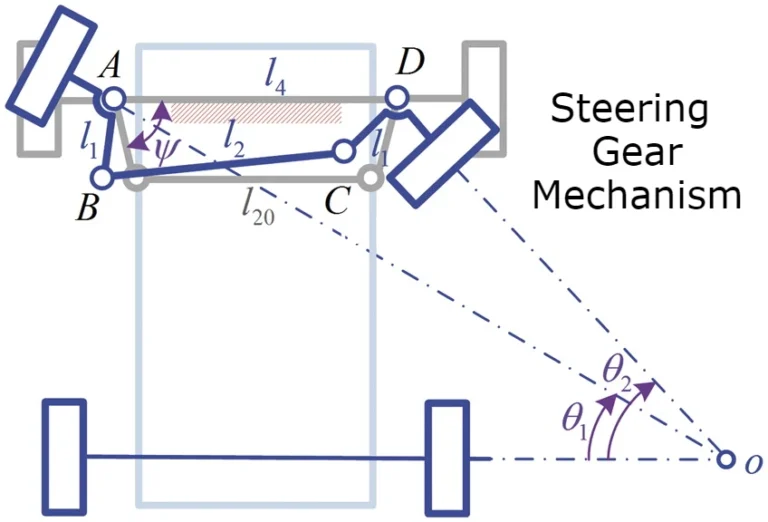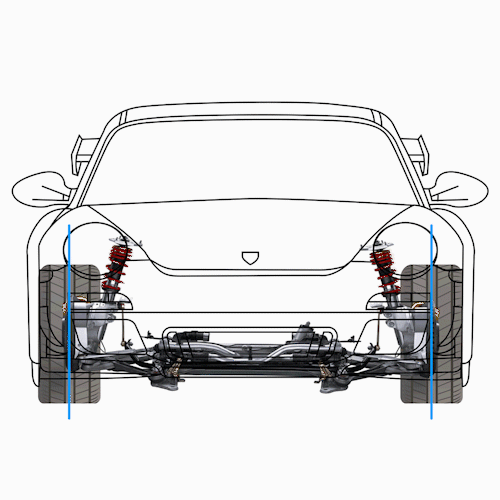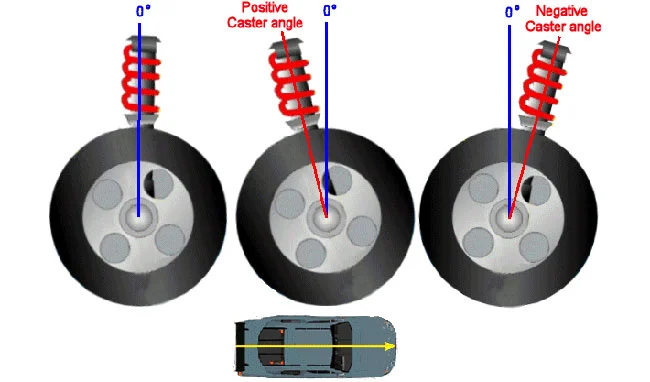Camber, castor, Kingpin inclination, and Toe in and out are the methods of steering geometry system. Steering geometry is the geometric arrangement of the steering system parts and the value of the lens and angles within it. Today in this article I will discuss what is camber, castor, Kingpin inclination, and Toe in and out.
Camber, Castor, King Pin Inclination, Toe in and Out
Camber, castor, Kingpin inclination, and Toe in and out, are the terms used in the steering system. As the driver turns the steering wheel the movement is transmitted through the steering saved to the angular movement of the tyre. This incline moment of tires is very important to drive the vehicle properly. So maintaining these terms is very important to drive the vehicle and save the tires.
All these terms are discussed below –
Camber
Camber is the angle between the center line of the tire and the vertical line when viewed from the front of the wheel. When the angle is outward so that the wheels or further effort at the top than at the bottom, the camber is positive. When the angle is inward, so that the wheels are closer together at the top than at the bottom, the camber is negative. Any amount of camber, positive or negative, tends to cause uneven or more tier wear on one side than on the other side. Camber should not exist 2 degrees.
The front wheels are not usually mounted parallel to each other but are fitted outwards slightly at the top and inward at the bottom to have a positive camber. The purpose of the camber is to prevent the top of the wheels from tilting inward too much because of accessive loads or play in the kingpins and wheel bearings. When the vehicle is loaded and rolling along on the road, the load will just about bring the wheels to a verticle position. On vehicles having negative camber, the opposite is true.
The camber on modern vehicles is adjusted using shims or an eccentric cam in the control arm shaft. Excessive camber prevents the tire from having correct contact with the road which causes it to wear only on one side directly beneath the load. The unequal camber causes the vehicle to roll in the direction of the will having greater camber which upsets directional stability and tends to scuff the tread on the opposite tire.
Read More – 8 Types of Steering Gearboxes and Their Functions.
Caster
In addition to being tilted inward toward the center of the vehicle, the kingpin axis may also be tilted forward or backward from the vertical line. Is known as a caster. Thus, the angle between the vertical line and the kingpin center line in the plane of the wheel is called the castor angle. When the top of the Kingpin is backward, the caster angle is positive, and when it is forward, the castor angle is negative. The caster angle in modern vehicles ranges from 2 2 to 8 Degrees.
The caster produces directional stability by causing the wheels to lead or follow in the same direction as the vehicle travels. When both the front wheels are positive caster, the vehicle tends to roll out or lean out on turns. But if the front wheels have a negative caster, then the vehicle tends to back or lean in on turns. There is another important effect of the caster angle.






